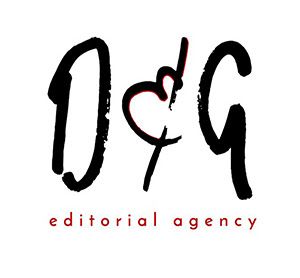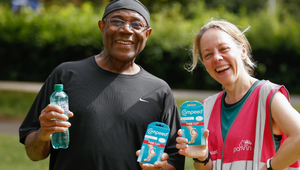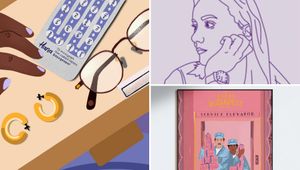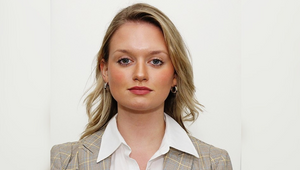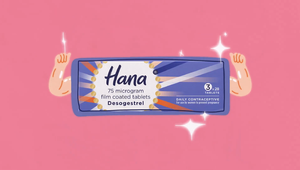
“Words Written by People Have Never Been More Important in Advertising”

Partner and copywriter at Dirt & Glory Media, Ben Moss started his career as a sports journalist and editor before becoming a wine journalist for a retailer and importer building wine brands in Europe. When his former editor Nigel Brown launched Dirt & Glory - a modern communications agency that takes pride in telling brand stories that people actually want to hear - Ben was asked to join the new venture as a partner.
His very first Dirt & Glory project for Ballantine’s Whisky creating a zero-gravity glass launched exclusively in The New York Times before becoming a widely shared story across a huge number of different titles from Wired and The Guardian, to Playboy, GQ and everything in between.
In this interview, LBB speaks to Ben about his most memorable work, the synergy between journalism and advertising, and what makes for powerful editorial ad content.
LBB> With your previous experience in journalism, what skills do you transfer into your current role, if any?
Ben> Good advertising is about attention, relevance and context in the same way that journalism is. At a time when online publications and journalists were trying to work out how to monetise their editorial, original storytelling was central to helping to build an audience. Clarity and context was important in a busy domain. There are many synergies between a reader discovering a news article or a person engaging with an ad.
In my first role in sports journalism, our newsroom was directly next to the sales team which in hindsight was really enlightening. It gave me context about the wider commercial demands on publishing that very much apply to working with brands. It gave me an amazing insight into the early digital advertising world, and at the same time gave me time to develop my writing.
Ultimately, journalism and advertising both involve communication and the dissemination of information to an audience. While they have distinct purposes and require different approaches, the commonalities between journalism and advertising are that both are about communication. Communication that is either designed to inform, educate, and shape opinion, or persuade people to purchase a product or service.
As an editor, we had to be protective of the publication’s tone of voice, get to the crux of the story quickly and distil it in a clear way. This approach speaks to copywriting too I think. It was never just about writing, editing and publishing the story either. Beyond a story being published, how were we ensuring people could find the story and hopefully come back for more? We could never be static.
I started as a journalist at the same time Twitter was launched, which in hindsight was pretty fortunate. Social media enabled us to plug-in to audiences and communities, in this case football fans, and deliver stories to them that they actually wanted to read. We were football writers when news aggregators were also emerging. In that domain, for better or worse, it made you think deeply about why someone should choose to read your story over another.
LBB> Dirt & Glory places great importance on editorial content, is that what drew you to them specifically?
Ben> Dirt & Glory was really borne out of the editorial experiences which many of us had. It was started by a former editor of mine, Nigel Brown, and I was second or third in the building depending on who you ask! The greatest appeal for me was to be able to transfer what I had learnt in my career to date and work with someone who had the same drive and aspirations as me.
From the outset, we wanted to try and challenge brands and advertising agencies about the power of telling real stories, using our editorial approach to communications. Helping them distil an idea into a multitude of different stories, that when executed well had the potential to create a real emotional impact on an audience, and help the story travel further. We were perhaps a little bit idealist given our backgrounds, but I think that journalistic sensibility has stood us in good stead.
We were initially incubated by an agency called Work Club (later bought by Havas), which was a really exciting ad agency doing some really innovative work, particularly in digital. It was probably the most rapid crash course in advertising one could hope for. I think we found a lot of common ground about the essence of storytelling. Being immersed in a bigger agency almost immediately, was hugely beneficial for us, not just because we had access to some amazing briefs and brands, but also to their hugely talented and experienced team. I like to think that they saw value in having us knocking around! We were lucky to work with some very talented, driven and creative people, who showed us what it was like to not just come up with an amazing creative idea, but to actually deliver it into the real world.
We found ourselves working on brands like Chivas Regal, Heathrow, Ballantine’s, Ella’s Kitchen and Durex amongst others. There was no hiding place and we were judged on the work we delivered. It was exciting for a young agency to feel like we were helping. After Work Club was sold we were also incubated by Havas (Havas Work Club), which again gave us access to amazing brands and incredible people. For young people making their way in advertising that level of support and exposure was invaluable. When the time came to stand on our own two feet, six years ago, those early experiences were very formative.
LBB> What do you believe is the power of editorial ad content?
Ben> I’m not the biggest fan of the word content, but I think everyone loves a good story. Whether it’s funny, sad or thought-provoking, memorable stories can help brand’s unlock their true potential. I think that’s really exciting.
Ultimately, people can turn your ads off or choose to ignore your stories in the same way a journalist can decide to completely ignore your press release. Whether they’re seeing your ad on television, out-of-home or in a social feed, brands are ultimately unwelcome guests. I think starting with that assumption is always a healthy place to be for brands. Assume you’re a nuisance and build the right stories to welcome them into your world.
LBB> Tell us a little about your creative process - what’s the first thing you do when a brief comes in?
Ben> It’s a mix of excitement and trepidation. There’s genuine excitement for the work and the trust a client has placed in you, but there is also a lingering panic! How do we tackle this and how do we assemble the right team to deliver to the brief? Once that dissipates, I think most briefs tend to elicit a lot of questions before you can even think about finding an answer. Thereafter, it’s a lot of research and a lot of writing. Time is never your friend in an agency, but I think you have to become quite obsessive with the brief and the brand. If you’re developing a new tone of voice, you’re not going to get there quickly. If it's ad copy or a social media calendar, I’ll overwrite and then try and work my way back to find what will resonate with the audience. The first draft is never the last (a sentiment I’m sure many of our clients will agree with).
LBB> Which projects have you worked on that really highlight how editorial and advertising benefit from each other?
Ben> There are a few that spring to mind, even if every project I’ve worked on has been different. No brief is ever the same.
One of the first projects I worked on was for Ballantine’s Whisky. Working with Work Club they came up with this incredible sci-fi inspired idea that positioned whisky as one of earth’s enduring luxuries. Something that we would want to take with us when we, inevitably, ruin the planet and flee to the far corners of the galaxy. But to drink whisky in space, you’d need a zero-gravity glass to enjoy your Ballantine’s and a specially blended whisky for the connoisseurs of the future. We all felt that this brilliant idea could travel further if we actually made both the glass and the whisky for space. The team worked with the Open Space Agency to develop the first whisky glass engineered to work in microgravity, which we ended up testing at the ZARM Drop Tower, in Germany. Remarkably, it actually worked.
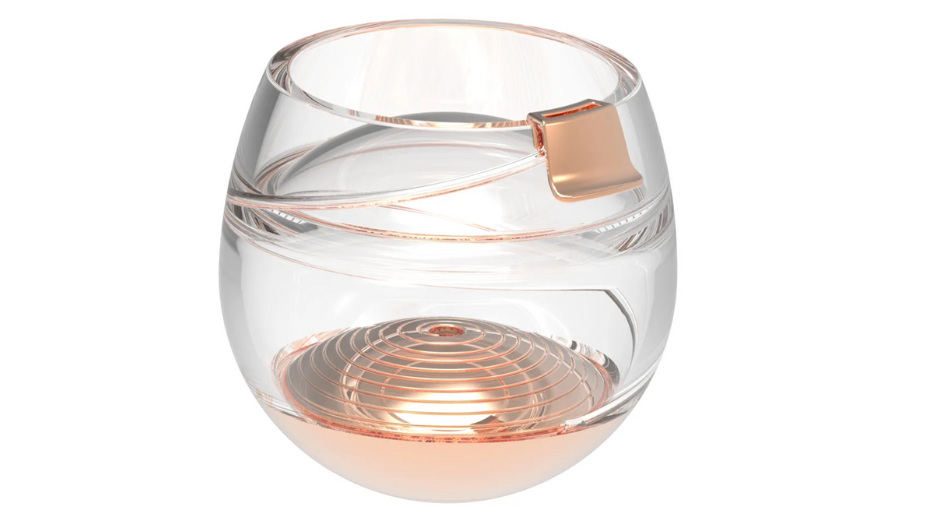
The final design was beautiful and it became a central protagonist in the equally beautiful advert, which really honed in on the unique ritual of the whisky drinking experience. Ballantine’s master blender also created a bespoke whisky that could be enjoyed in space.
Alongside helping to tell the design and innovation story, we commissioned illustrators like Marie Bergeron and Gustavo Torres to design a series of futuristic whisky bars of the future, we had an editor’s letter from Ethan Siegel, the American astrophysicist, and interviewed mixologists about flavour profiles at zero gravity. We ultimately helped to unearth a multitude of stories to support the incredible campaign, which gave journalists an amazing publication to reference in order for them to pick up and run with the story themselves. We launched Space Glass exclusively in The New York Times and it became a widely shared story across a huge number of different titles; from Wired to The Guardian, to Playboy, GQ and everything in between. The campaign allowed Ballantine's to authentically speak to such a diverse range of existing and new audiences, across a number of different verticals. The whole project was just incredibly exciting to be part of.
I’m really proud of our work on ellaOne, the most effective morning after pill, and Hana, a daily contraceptive pill available without prescription. In a heavily regulated over-the-counter-medicine domain, we have helped establish really modern and inclusive brands in the female sexual health space. For ellaOne’s MyMorningAfter campaign, we launched the campaign exclusively in Refinery29 and helped establish a brand platform for ellaOne that still sees women and people with uteruses sharing their stories about what it’s like to access the morning after pill. We’ve helped shift the narrative around accessing the morning after pill and we’re working hard to do the same on the contraceptive pill.
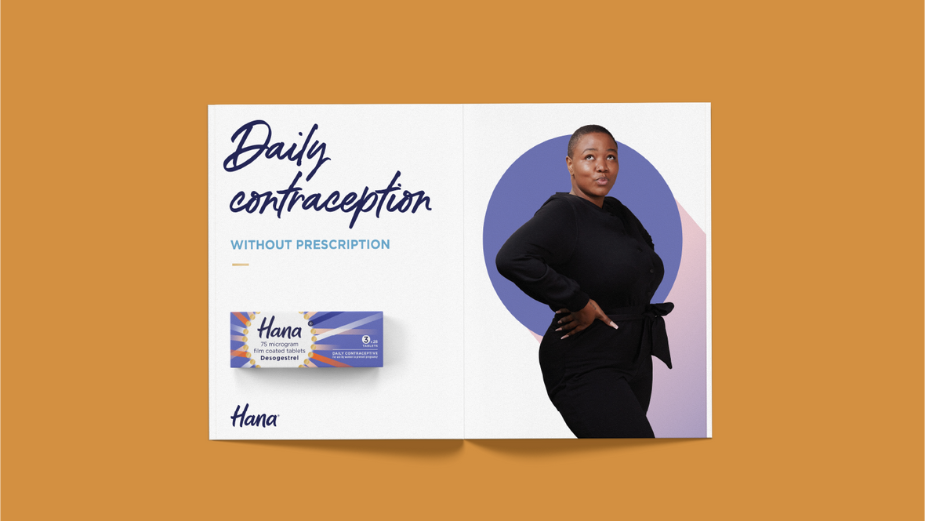
I have loved working with GSK and ViiV Healthcare for the LivLife campaign, which was based on the insight that many people living with HIV and their healthcare professionals were not discussing ways to improve their antiretroviral therapies (ART); particularly if the person had suppressed their viral load to undetectable levels (Undetectable = Untransmittable). We created a documentary series that explored through the lens of a real relationship what living with HIV means; the journey they have been on, the need to speak more with their doctors and each other about how their treatment made them feel, and the emotional road they have both been on during their particular relationship. These stories have helped to challenge the stigma of being HIV positive and have promoted a timely discussion around living HIV.

We’ve got to work with some amazing directors and filmed all around Europe, telling some incredible stories from some very inspiring people. People like the late George and his lovely husband Somchai, Paida and her mother Mavis, and Xiana and her best friend Patricia amongst many others. I’m still amazed and incredibly grateful that my work enables me to hangout with these lovely people.
Finally, we work with a company called Proximie, which is a surgical software platform that enables surgeons to virtually scrub-in to any operating room. We have worked with their CEO and Founder, Dr. Nadine Hachach-Haram FRCS (Plast), BEM, and their team since 2019 and have seen them grow from Series A startup to a "Soonicorn" knocking on the door of Europe's unicorn paddock (according to Sifted in June 202). Getting the attention of the world's leading healthcare journalists during a global pandemic is never straightforward. Proximie's story is impossible to ignore (via The Times).
Nadine was on the front cover of Wired in July, but more broadly, I think we’ve hopefully helped them anchor their vision and mission, and provided clarity to their communications so that journalists can really understand how to bring this incredible business to life. It’s a real treasure trove of very inspirational and impactful stories.
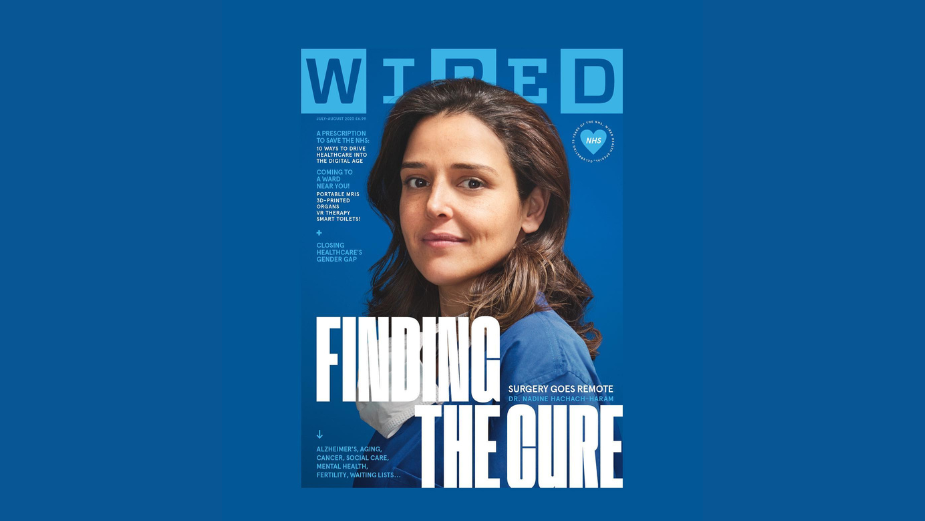
LBB> What’s exciting you most about the industry right now?
Ben> Human experiences and insights really count and words written by people have never been more important in advertising. Looking at the recent British Airways work by Uncommon, or the hashtags #copywritersunite and #CopySafari (both of which were founded by a copywriter called Vikki Ross), I feel that great copywriting is alive and well and it stands out more than ever. I think that’s hugely exciting for an agency like ours.
LBB> What inspires you and keeps you going in the job that you do?
Ben> Fundamentally, I still really enjoy the work. I enjoy the variety of people we work with and we have developed long term relationships with many of our clients. No one day is ever the same and we get to work on such a diverse roster of clients and brands in multiple categories.
LBB> How do you ensure your team executes its best work?
Ben> I think I’m always learning on how best to do this and I definitely don’t always get it right. We try to give our team space, which is important. Since the pandemic we have established a hub and home model, which enables our team to have full autonomy over where and how they work. Our office is in Somerset House, which is a beautiful and creative space, but ultimately our team can work wherever they feel most comfortable and, hopefully, where they can do their best work. This model is really founded on trust and an understanding that everyone in our team is different.
LBB> What would be your advice to people who want to start in the industry now?
Ben> Be curious and read, watch or listen to everything. And write a lot. If you love writing, that’s a great place to start.







